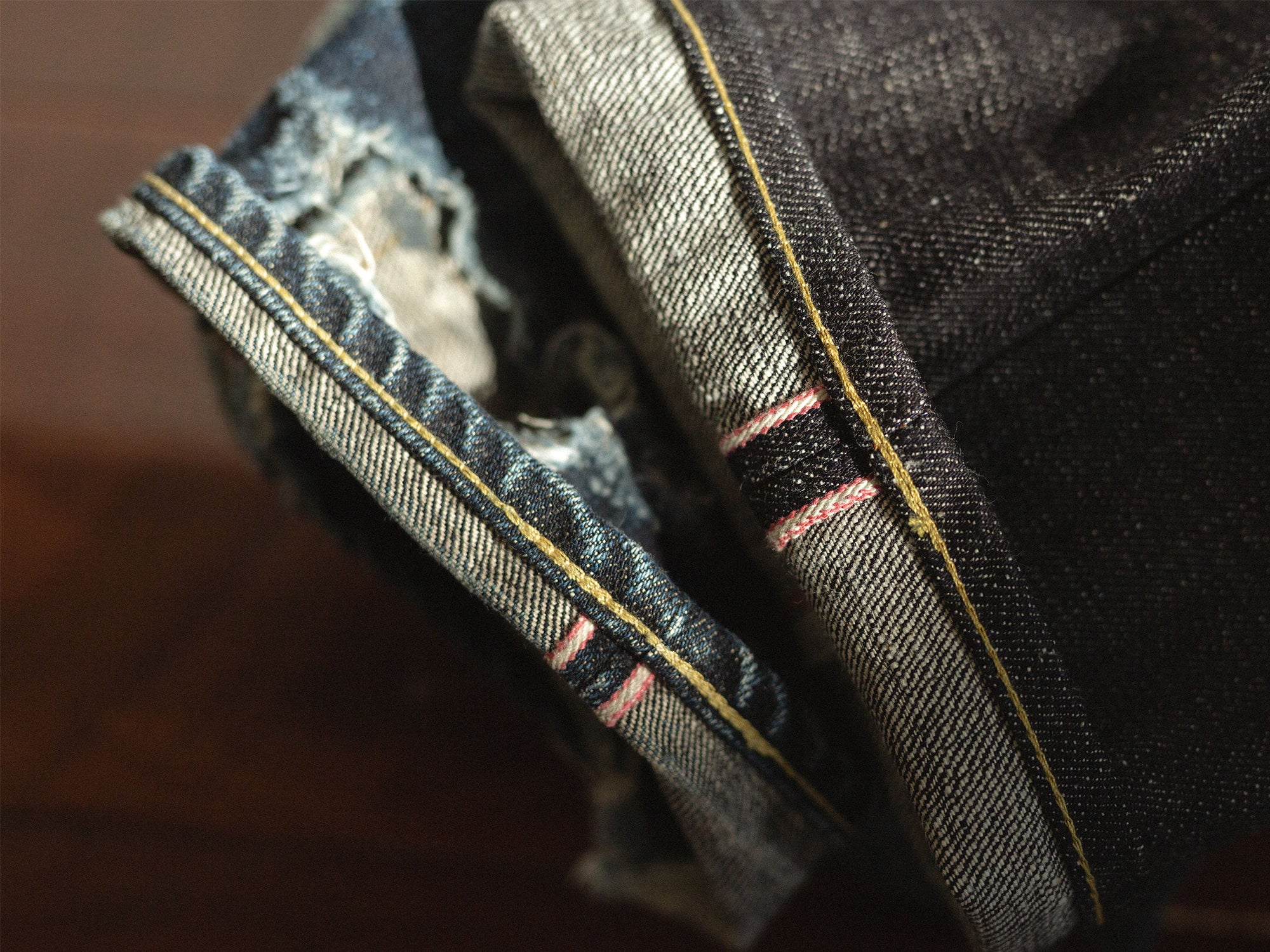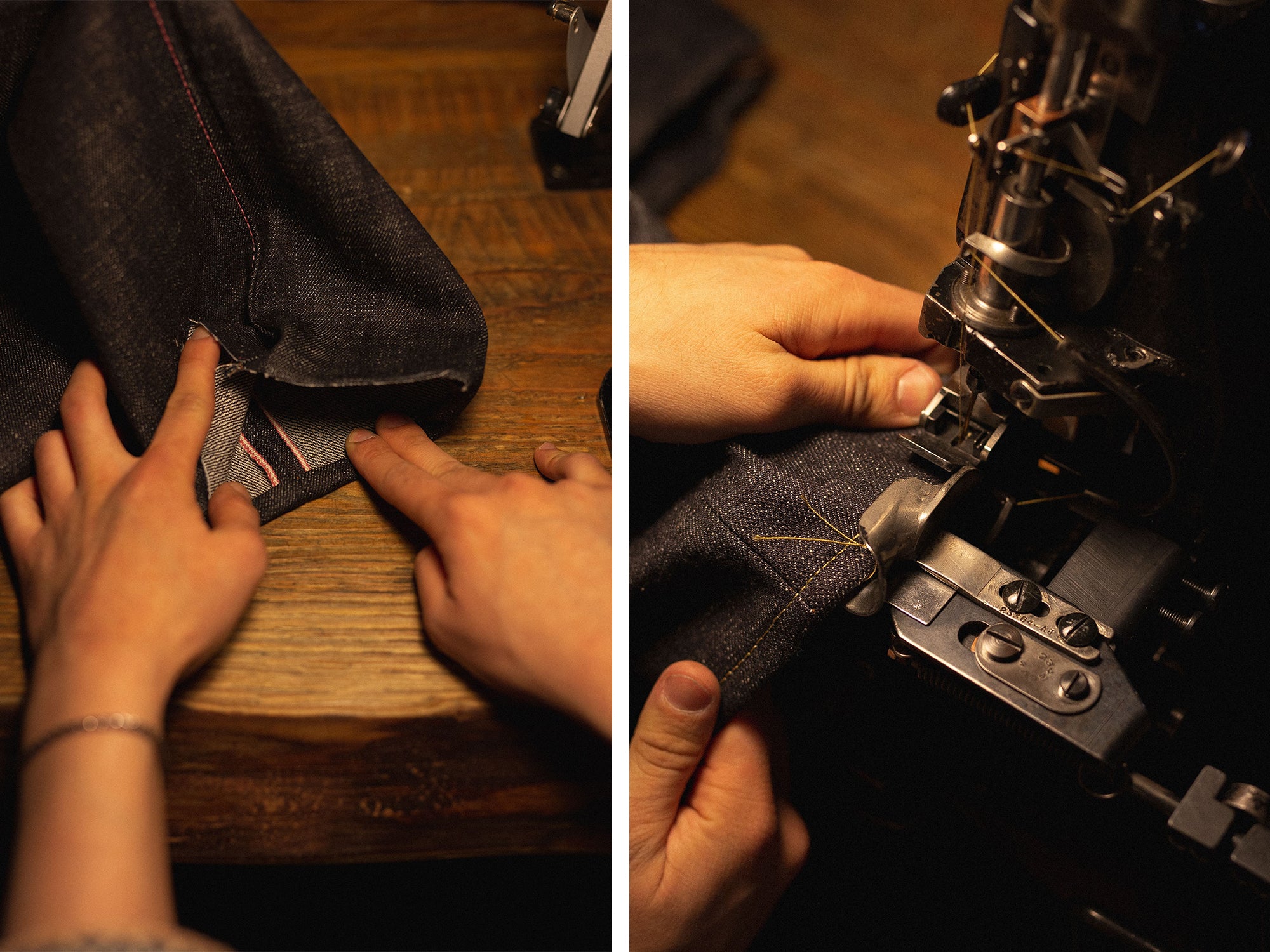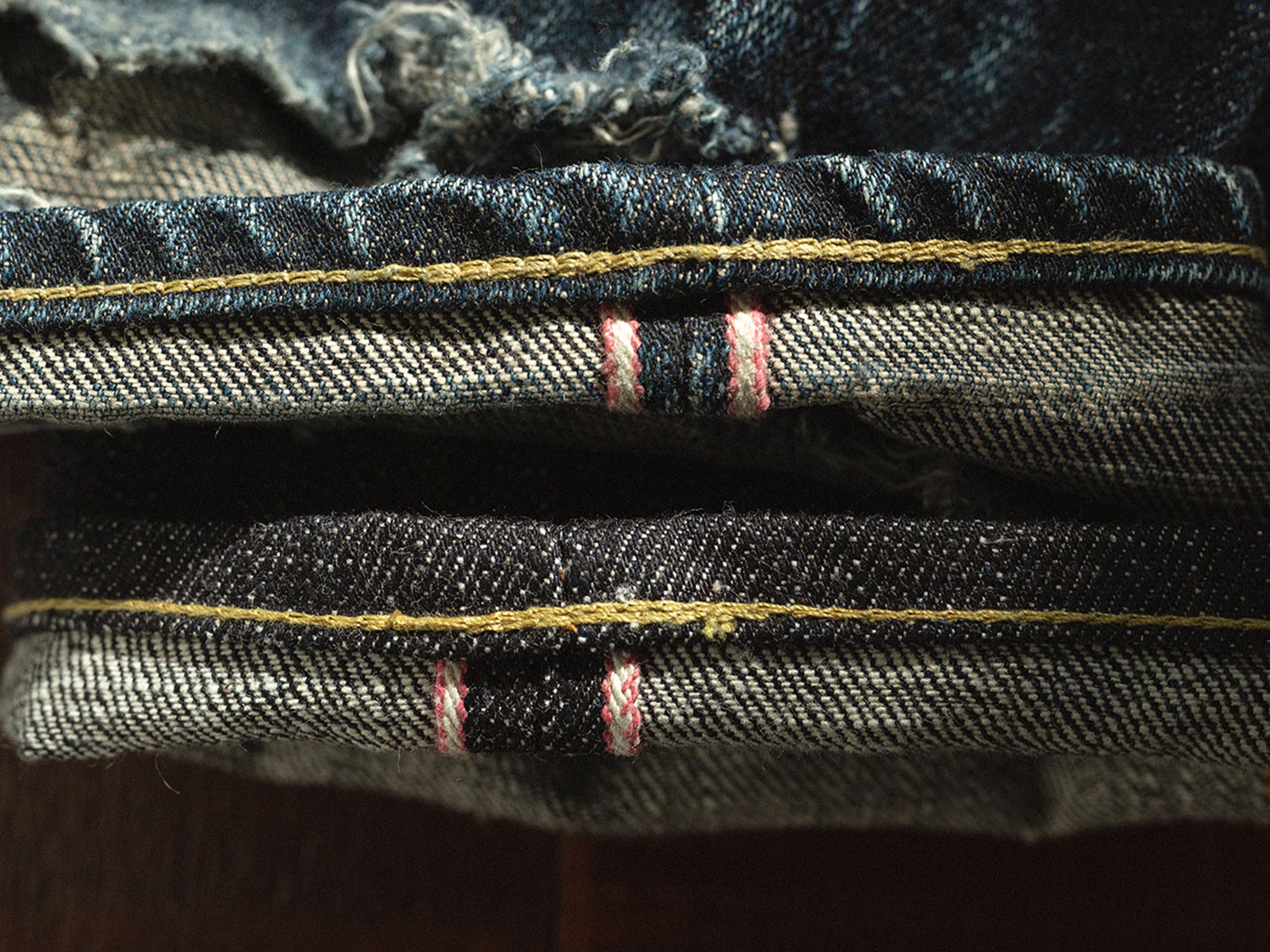
For true denim enthusiasts and jean aficionados, the hem on their denim is as important of a detail as the selvedge ID. We at Blue Owl are proud to offer our hemming services for both mail-in and same-day in-store services.
* Hemming is a free service for all denim purchased from Blue Owl
It doesn't matter whether you're picking up your first pair of raws or are a seasoned fader, the hem on your denim needs to be spot on. Some folks like to cuff their denim, some like the stack, and some like to let their ankles have all the breathing room they desire. Whatever the case, inseam length matters, as does the way you get your jeans hemmed. For more information on achieving your perfect length, feel free to check out our how to cuff guide.

Using our second-generation Union Special 43200G sewing machine dating from the 1950’s we are able to provide the same stitch in tandem with the same machine used on denim from the early-mid 19th century. Our Union Special is one in a handful still operable in the United States, as most were bought up and shipped internationally to denim manufacturers in Japan. With our stockpile of parts, machines, and expertise, we hope to continue offering chain stitch hems on the antique machine for years to come.
The chain stitch is a traditional type of stitch used to hem jeans, found on most artisan-made denim and antique pairs. It consists of two separate threads that “chain” together to keep your hem in place. Our Union Special 43200G machine specializes in this stitch. The feed dog of the machine pulls the denim as the stitch is being set, which allows for the highly desired "roping" effect along the hem edge to occur with wear over time. Below are some examples of the chain stitch and roping effect.

To give you a better idea of how we hem our jeans, we’ve outlined the steps we take to hemming below with accompanying imagery.
How we hem our denim:




